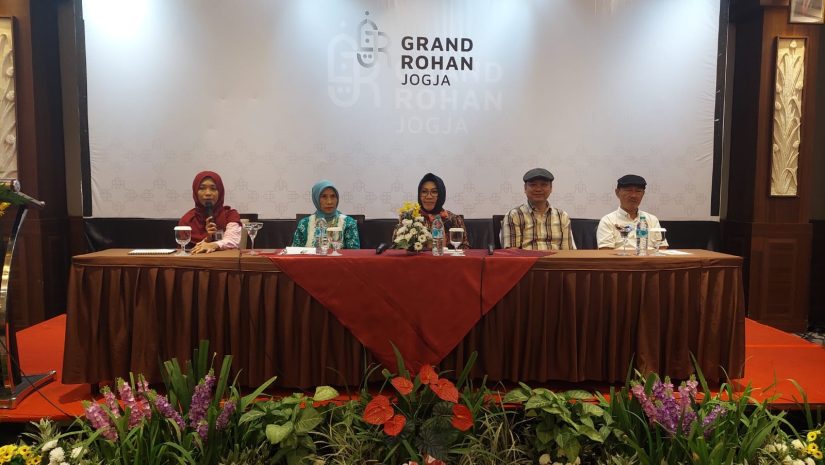
Leveling is the determination of the equivalence of books for readers with reading levels. Non-textbook is a type of book that aims to provide enrichment of knowledge, insights and skills for textbooks from certain scientific studies. From this limitation, “Nontext Book Leveling” is an important tool that should be known, understood, and applied for writers/authors of nontext books.
The topic was delivered by Wiwien Widyawati Rahayu, lecturer of Javanese Language, Literature, and Culture study program, Department of Language and Literature, Faculty of Cultural Sciences UGM at the “Technical Guidance on Writing Javanese Children’s Stories” organized by Yogyakarta Language Center (BBY) at Grand Rohan Hotel Yogyakarta on May 18, 2024 at 08.00-16.00 WIB. Bimtek is a series of activities that began with a proposal writing competition which was attended by 375 people / titles. From the assessment of three judges, including Wiwien Widyawati Rahayu, 97 titles were selected. This proposal contains not only the chosen theme, topic, title, and level but also contains a description of the character and his characterization, a synopsis of the story, as well as a draft of the contents of the script per page along with a description of the illustrations that must be included. Why does it have to be this detailed? Because through what is written by the proposer, it will be known that it is suitable for the age level chosen.
With the guidance, it is hoped that the discrepancies found in the 97 selected proposals can be recognized, consulted, and corrected by the authors. The suitability is based on the classification of readers, including early readers (A: 0-7 years), early readers (B1, B2, B3: 6-10 years), intermediate readers (C: 10-13 years), intermediate readers (D: 13-15 years), and advanced readers (E: 16 years and above). Of the five classifications, only three were presented (except for intermediate and advanced readers) in detail because they were adjusted to the provisions set by BBY as a requirement for the competition level.
The participants, who were children’s story writers, came from various districts in Yogyakarta. The diversity of professions, such as formal and non-formal educators, civil servants outside the field of education, students, journalists, retirees, professional writers, housewives, entrepreneurs, and private employees proves that writing activities occur widely in society. This can be used as additional evidence that being a writer is a professional choice that can be pursued and relied upon for all time.
At the end of her presentation, Wiwien said that, “writing non-textbooks is an opportunity for all of us as long as we are able to identify the disparity between the curriculum objectives to be achieved and the availability of textbooks, as well as existing learning practices. This needs to be known, considering that the function of non-textbooks is to complement and strengthen existing textbooks”.
The activities that have been carried out are related to the sustainable development goals (SDGs), namely Quality Education (4) because the participants/writers involved in the technical guidance can improve their writing competencies in accordance with the reader’s level; Decent Work and Economic Growth (8) because with the competencies gained, the technical guidance participants can recognize the opportunity that writing can be used as a profession; Partnership to achieve goals (17) because the relationship between participants with various professions, academics as resource persons, and institutions as stakeholders can take place well because they are aware of their own capacities so that relations of mutual need and complementarity are realized to achieve goals.

